One item of equipment, a valve, is necessary for every supply system one can think of. Which valves best fit an enterprise’s demands on a ship, and why are these crucial for the efficient operation of a supply system at a ship? This article discusses everything one needs to know about marine valves. Also, a business must choose the best marine valve manufacturers if they wish to source quality valves at budget prices. Research is crucial to balance quality and affordability to make a business profitable. Therefore, understanding the different types of ship valves and how to source quality manufacturers is crucial to secure the best buy.
What Are Ship Valves?
The marine sector is heavily dependent on valves. Among many other uses, valves control the amount of electricity loaded and stored aboard a ship, supply water for firefighting equipment, manage and process wastewater, and store any form of liquid cargo. All marine valves must be trustworthy due to the scarcity of resources at sea, and a valve that works in saline water must be robust.
How Does Marine Valve Work?
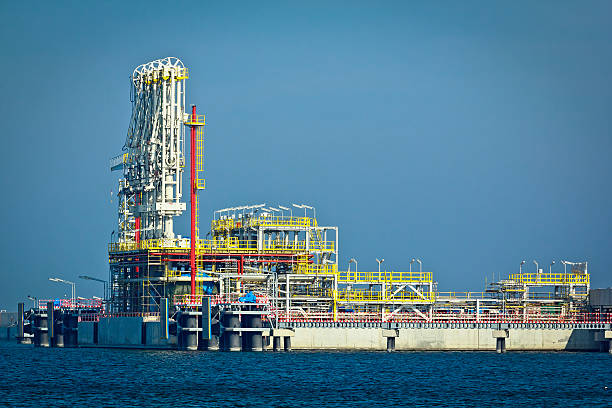
A ship faces numerous challenges when it is in operation. To make the ship operate efficiently, those issues need fixing. The principal purpose of marine valves, a crucial ship accessory, is to regulate the pressure, rate, and direction of liquid flow in the ship’s pipeline. The spacecraft’s ability to operate will suffer if the liquid inside the ship is poorly managed. As a result, marine valves are essential to the entire ship’s operation.
There are various types of valves in ship, and they all have different mechanisms.
- Working Of Butterfly Valve
Understanding how a concentric butterfly valve functions require knowledge of its construction. A central disc or plate in the valve is round and the same diameter as the pipe attached to it. The middle of the valve has a rod that runs through it, parallel to the medium’s flow. The actuator, with which the rod has a connection, moves the valve according to preset commands. The valve’s position resembles the butterfly’s wings spreading when the actuator moves the rod. For this reason, the name “butterfly valve” is given to this class of valves.
- Working Of Industrial Ball Valve
Industrial ball valves are a type of marine valve that regulates fluid flow using a hollow, perforated ball. This sort of valve, also known as a shut-off valve, controls whether a fluid is allowed to flow or stopped by adjusting a rotatory ball with a bore. The industrial valve has two types of control: manual and automatic. To allow the fluid to flow or halt it, the rotatory ball needs to be at 90 degrees. These valves are frequently employed as shut-off valves but specifically made ball valves can also be utilized as control valves.
- Working Of Gate Valve
The gate valve is one of the most often utilized valves on ships. In terms of structure and operation, it is also among the simplest valves. As its name suggests, a gate valve comprises a straightforward mechanism called “the gate,” or the valve disc, that controls fluid flow. It is essential to remember that the gate valve can only be operated in one position and can only be set to full or no flow. Without changing direction, the valve provides full-bore flow.
Since no complicated mechanisms are in use, the operation of gate valves is relatively straightforward. Moving the “gate” at a right angle to the fluid flow requires turning the spindle wheel connected to the spindle rod. The “gate” between the circular holes with seats is opened or closed by the screwed spindle operating in a nut and lifting the valve. The valves and seats can either be parallel or tapered in terms of their facing sides.
- Working Of Globe Valve
The globe valve’s critical shut-off and throttle operations are carried out on the pipeline medium. By giving the valve stem some torque, the sealing is completed. In the axial direction, the stem is firmly attached to the sealing surfaces of the valve seat and pressure valve. As a result, the small gap between the covers won’t allow the medium to leak. The valve seat sealing surface produces a seal for the globe valve, which then closes the cover. Along the midline of the valve seat, the stem moves the valve vertically. In addition to supporting a wide pressure range, the valve features a reasonable flow adjustment, a short opening height while opening and shutting, and is simple to maintain.
The Importance Of Valves In Building Ships
In the marine business, valves are essential. With increased size and utilization, ships need to be able to produce power, manage wastewater, and regulate HVAC systems in addition to carrying out their essential functions. The types and quantity of onboard valves will vary depending on the ship’s size and intended use. Valves are employed in various applications, including controlling the loading and storing of a ship’s power supply, providing water for firefighting purposes, handling and processing wastewater, and storing any liquid cargo. Because there aren’t many resources available at sea, any valve that handles sea water needs to be sturdy and dependable.
There are many different types of valves on ships, each with a particular purpose, such as butterfly and ball valves. However, valves are typically used to ensure the ship operates at its best and to manage and regulate the flow of liquids on board. There are limitless applications for shipboard valves, as they may also convey gases and vapors.
The majority of metals oxidize or draw oxygen atoms to their surface. This creates a protective layer resistant to corrosion in some materials, such as stainless steel. However, it results in rusting in carbon steels, also known as the loss of metal oxide flakes. Water encourages corrosion, and saltwater speeds up the process even more. Even stainless steel experiences stress corrosion and pitting when exposed to seawater due to the chlorine in the salt. Corrosion resistance must be considered when choosing valves that handle water, especially those that come into contact with seawater.
Types Of Valves In Ships Based On Their Design
The various system conditions where flow must be managed have resulted in various valve designs. Here is a list of different types of valves in ship.
- Gate Valve
These types of valves on ships are the most prominent. These valves’ purpose is to regulate the liquid’s flow through the pipes. To carry out the desired operation, they lift or descend as a shutter gate does.
The design and operation of a marine gate valve are relatively straightforward. However, there are a few modifications, such as the rising stem design, in which threads are coupled with internal threads inside the bonnet. Then there is the non-rising stem design, in which the stem is joined to the valve disc through an internal thread.
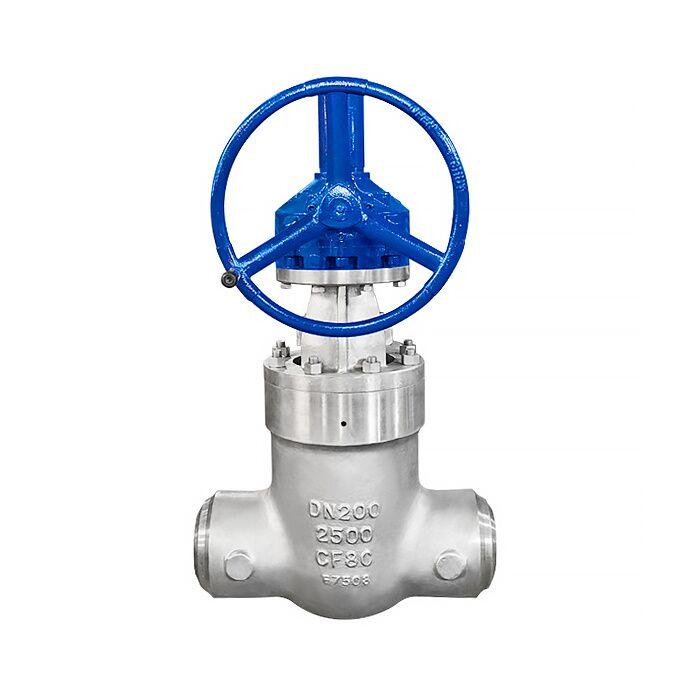
Although gate ship valves come in various designs, the two most popular are rising stems and non-rising stems. The non-rising stem valves are used in ships more commonly than the other two types due to their small size and lack of space. Typically, these valves are found on lower floors of ships or in confined vertical spaces. The valve, which functions like a gate, has a stem that can be raised or lowered according to the function. According to the location, the medium either discharges or stops. Gate valves are the best choice whenever slurries are involved since they can easily cut through the flow.
- Industrial Ball Valve
A disc in the shape of a ball is situated inside the marine ball valve body and is used to initiate and stop the fluid flow in a ball valve. Whenever the valve is open, the port in the middle of the ball points in the direction of the flow. When the valve is in the closed position, the port faces the opposite direction from the valve’s end and obstructs the flow channel.
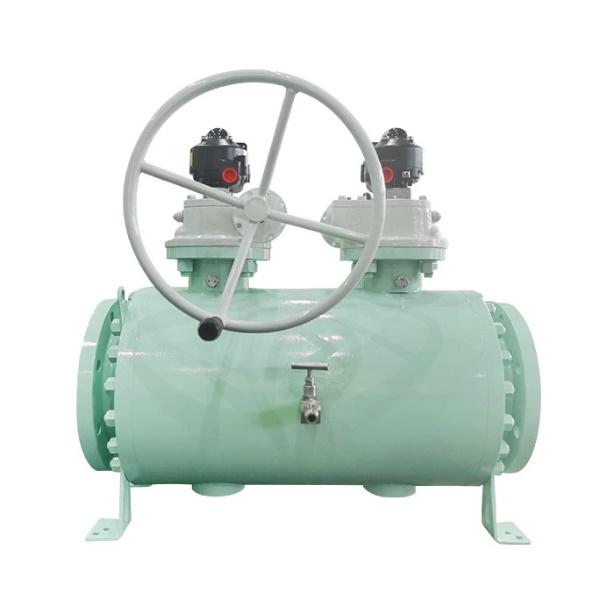
Ships use ball valves for rapid on/off operation. This DBB ball valve has a minimal pressure drop and low leakage rate. It is very low maintenance and has a long working life. Numerous industries use these valves, particularly those requiring high temperature and high pressure. Slurries must not be utilized, as the dispersed particles can build up and harm the valve.
- Butterfly Valve
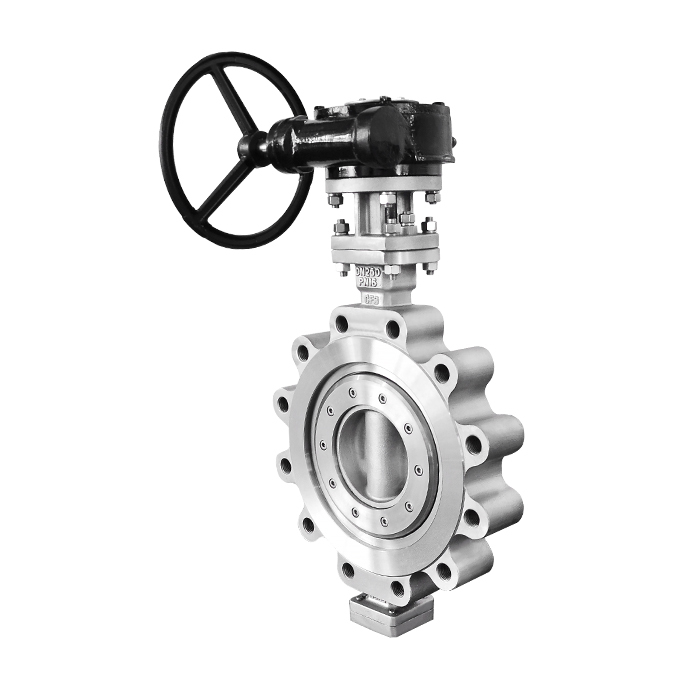
A butterfly valve, one of the most widely used industrial valves, is effective at performing both fundamental stop/start duties and the proper management of fluid in a pipeline. Marine butterfly valves have unique qualities that make them durable under challenging conditions. These valves are made of a substance that prevents rusting even when submerged. Many marine butterfly valve types provide optimal sealing and flow management in the right circumstances.
Similar to how a ball valve operates, a butterfly valve operates similarly. The mechanisms of these two valves are somewhat similar because they are both quarter-turn valves. The plate is turned when a 90° rotation of the valve’s handle is made manually or with a pneumatic system. The valve’s location, which determines its action, might be either parallel or perpendicular to the medium flow. For media regulation applications, partially rotating the valve will be helpful. A butterfly valve can snare flow by shifting the plate’s locations partially. Choosing a reputable butterfly valve supplier for valve needs is crucial.
- Piston Valve
The Piston valve controls fluid flow in a chamber by using a piston to move a tube or pipe. This valve can open and close the flow stream; it was not made for applications involving throttling. When the piston is opened, only its bottom face comes into touch with fluid; the remainder of its body is kept safe by the top sealing rings. As a result, fluid prevents sealing rings from eroding. Although it can also be actuated by electric or hydraulic means, manual operation is preferred.
A piston and lantern bush are used in place of the seat and cone in the piston valve’s construction; otherwise, the same as the globe valve. The two types of piston valves are balanced and unbalanced. High-pressure applications benefit significantly from balanced piston valves, while low-pressure applications benefit more from unbalanced piston valves. Additionally, the flow of dangerous liquids and gases is controlled by a piston valve.
- Globe Valve
Both isolation and throttling can be accomplished with a marine globe valve. A cylindrical body split in half by an interior baffle makes up the device. The pressure eventually decreases due to the baffle’s diversion of fluid flow. Additionally, the fluid flow is controlled by a moving disc and a stationary ring seat. By rotating the handle, one can raise and lower this disc. The disc must be fully elevated for the flow rate to be at its highest. However, when the disc is entirely lowered, the flow is stopped.

Environments with high temperatures and pressures can be handled using a marine globe valve. Furthermore, it offers affordable pricing and simple installation and maintenance. It can only be utilized in systems that don’t care about pressure drop because it delivers a more significant pressure drop than ball valves.
- Diaphragm Valve
The diaphragm valve controls fluid flow by adjusting the area from which the fluid enters and exits. It is a bi-directional start/shut valve. The fluid path is sealed by a flexible disc known as a diaphragm, which rests on the valve body’s seat at the top. The valve’s opening, closing, and regulation are controlled by the diaphragm, an elastic membrane that responds to pressure. Additionally, various materials can be used to create the valve body based on the purpose. It is typically constructed out of plastic or metal.
Through linear compression, the diaphragm is pushed toward the valve body by the diaphragm valve. It is possible to manually or automatically activate it to obtain a precise control overflow. It is perfect, requires less upkeep, and is well-suited for applications with moderate pressure and temperature. However, it cannot be used to perform multi-turn operations.
- Check Valve
Making ensuring there is no backflow is the primary goal of a marine check valve. These marine valves operate by utilizing the pressure differential only to let one direction of medium flow. The valve’s construction is relatively straightforward; it consists of a tiny cylinder with two ports that serve as the inlet and outflow.
A basic marine check valve permits the medium to flow when the inlet side has a higher pressure; other marine valves have different mechanisms. These valves’ unique selling point is that they can be handled without a mechanical or automated device. When backflow presents a problem, these types of valves used in ships are helpful.
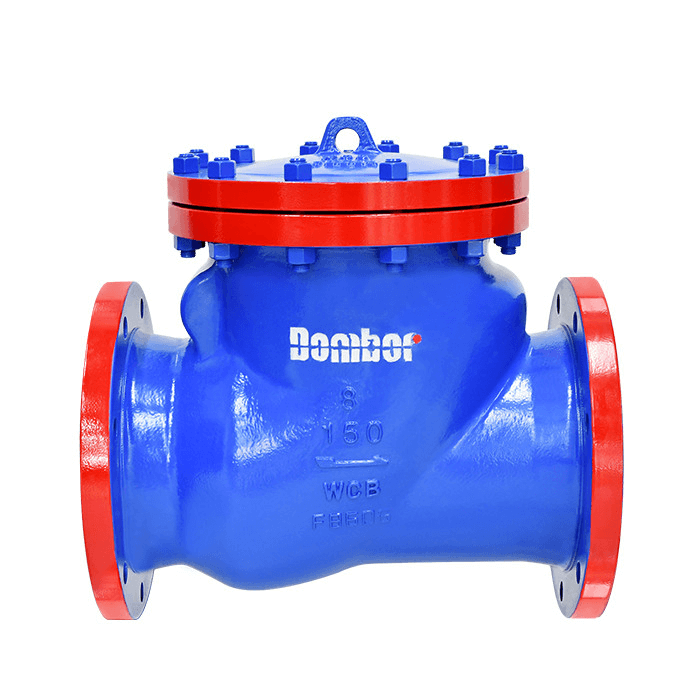
Check valves are often employed in the marine sector, especially in the desalination, hydraulic, and fuel handling processes. These valves, one of the primary varieties used on ships, can be used in challenging and essential conditions. A marine check valve is beneficial aboard ships because its primary purpose is to stop backflow.
- Pinch Valve
The fluid route can be opened and closed mechanically by pinching pinch valves, also called clamp valves, with a flexible tube. Fluids with no moving elements can flow in a straight line through them. It primarily consists of a housing, an elastomeric tube, and end connectors. A pinch mechanism is also present, which can be used to fully close the flow by pinching the tube. A pinch might be present on either one or both sides of the screw-operated device that acts as the pinch. The tube can also be squeezed using a hydraulic or air pressure system.
Two types of pinch valves—open and enclosed—can be distinguished based on their structure. The enclosed valve has a protective metal covering, whereas the open variant has none. Granular goods, slurries, meals, etc., are perfect for pinch valves. These valves also have a quick opening and closing speed. These are small and lightweight. However, due to the elastomeric tube, they are not designed to work at high temperatures.
Materials Used In Making Marine Valves
While the seat is composed of materials like nylon, neoprene, or metal, the valve body is made of plastic, ceramic, or metal.
A long-time favored metal for nautical uses is bronze, an alloy of copper and tin. It resists biofouling in addition to having good corrosion resistance.
Many seawater valves have switched to copper-nickel or nickel-chrome alloys in recent years. They are more expensive than aluminum-bronze but offer a desirable trade-off between corrosion resistance and strength.
The tasks performed by marine valves are similar to those performed by valves used on land, but there is one key distinction: marine valves are made from corrosion-resistant materials. They can handle seawater and endure salty environments thanks to this.
Components Of Ship Valves
Valves are constructed from a variety of parts.
- The valve body (shell), which binds all of the parts together, comes first.
- A bonnet is present, and it covers the aperture.
- Valve trim denotes the components that are present inside.
- Then there are valve discs that are present to either reduce or stop the flow.
- The discs are seated by seal rings.
- Valve stems are present to control how fast a valve shuts off.
ASME, API Standards For Marine Industry
Precise rules, laws, and regulations must be followed for particular uses and sectors. A valve must adhere to or be certified to the stated standards, such as ASME, API, NACE, etc., to be utilized in a particular boiler, ship, oil and gas refinery, nuclear power plant, pressure vessel, or other sensitive applications.
Factors To Consider When Selecting Valves Used In Ships
The following are the main criteria to consider while choosing marine valves for use in ships.
- Materials Used
Industrial pipelines transport fluids with various physical properties, including varied chemical compositions and being liquid or gaseous. Before selecting a valve, it is essential to grasp the characteristics of the service fluid. Materials used to make valves for ships should offer sufficient protection against the corrosive effects of service fluids. Fluids that are abrasive cause internal parts, such as seals and closing mechanisms, to fail early.
Verify the compatibility of the valve materials with the service medium. Extreme fluid services pipelines, such as those used in cryogenic applications, viscous fluid service, and industrial chemical pipelines, call for valves for ships constructed of stainless steel or chromium alloys. The marine valves can use seals that are chemically or metallically resistant. Extreme temperature and pressure variations are no match for these materials’ exceptional corrosion resistance.
- Valve Type
The flow control, function, and valve operation will decide what kind of valve is the best for the applications. A marine valve type with high throttling performance is necessary if flow control is all one needs for a specific application. The correct valve size and type choice are essential for providing flow supervision across the valve plug’s opening range.
Some valves have a characteristic that causes the flow rate to change when they open. You can select valves with specified plugs to alter the flow or gain of the valve. For applications requiring on and off or shutdown, ball, gate, plug, butterfly, and diaphragm valves function well. The globe, diaphragm, ball, and needle valves can all be throttled effectively.
- Temperature And Pressure
The permitted operating range for each pipeline is set by its temperature and pressure class. An industrial valve’s performance has to remain constant when the service fluid’s temperature and pressure vary. The risk of valve shell rupture might increase by the low strength of the valve for ship materials caused by high process temperature and pressure.
When choosing types of valves in ship, one should ensure the appropriate pipeline ratings are met for the desired temperature and pressure range. Valve materials and wall thicknesses should be able to withstand the pipeline’s maximum pressure and temperature without failing after several cycles. The valve should offer a trustworthy safety margin in an emergency that causes fluid conditions to exceed the intended limits.
- Maintenance
The maintenance of the valve in the ship is another thing to consider when choosing the best valve for the intended applications. Because they are among the simplest valve types to maintain and are obstruction-resistant, ball valves are a fantastic option if routine maintenance is necessary. A body and two end caps are the only parts of the three-piece versions available. Because the main body section is easy to remove for cleaning without removing the end caps from the tube, it prevents the line from closing during maintenance.
Contact Marine Valves Manufacturers To Get Ship Valves
If you need to buy valves in large quantities for your company, it is better to do so from a reputable marine valve manufacturer. Get in touch with professionals to obtain the best estimates and samples for marine valves. Business owners can transform their processes by sourcing the right ship valves that top affordability and quality. As a result, contacting a professional is crucial to ensure that your business processes are implemented correctly and adhere to global standards.









